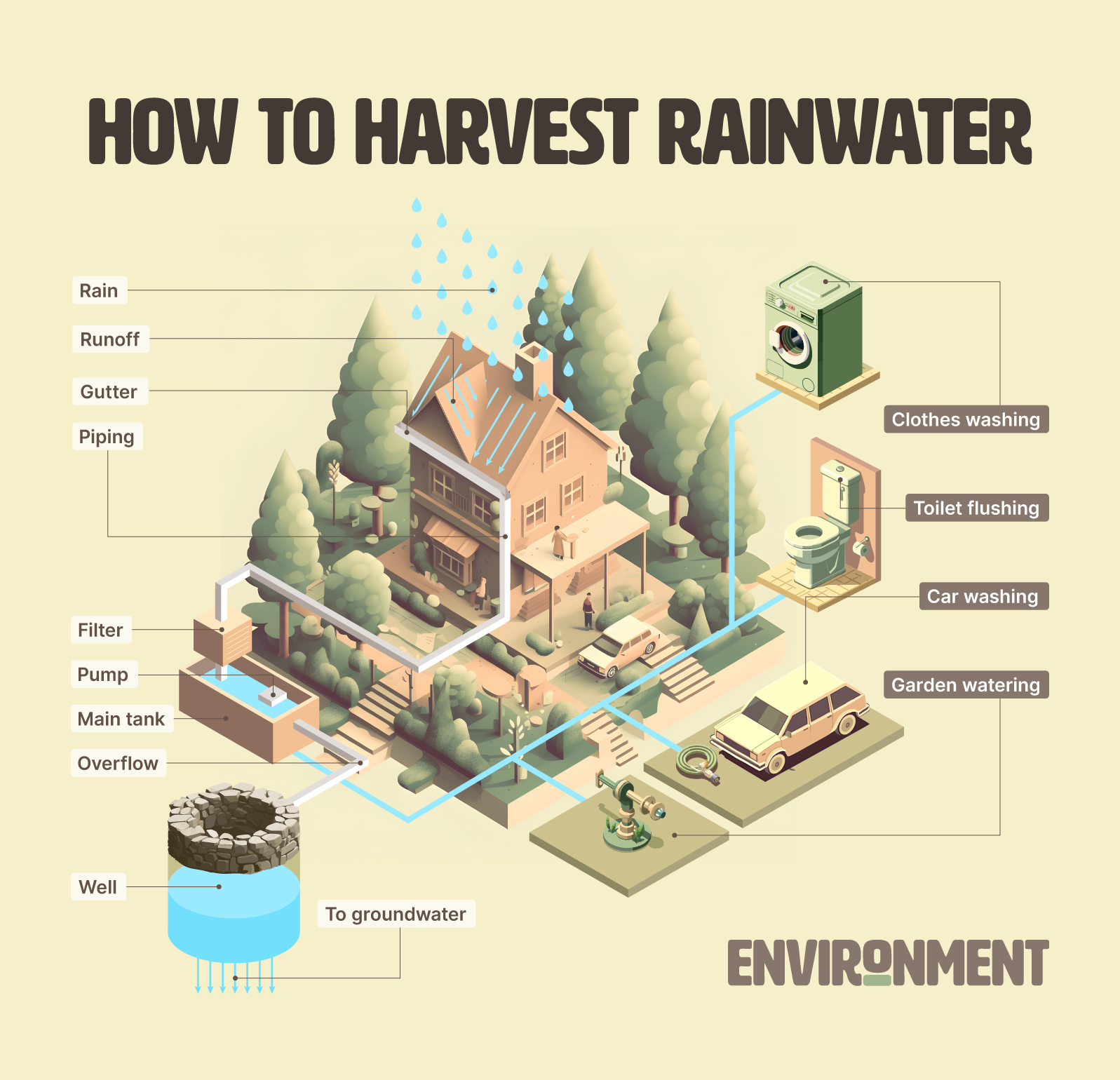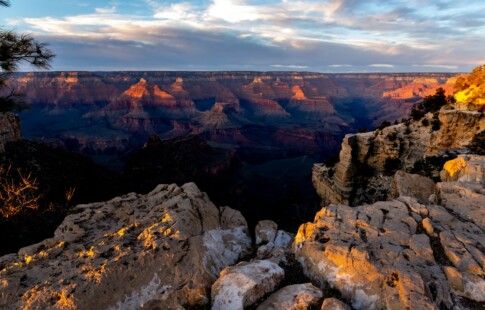
Is There a Solution for Drought?
We are reader-supported. When you buy through links on our site, we may earn affiliate commission.
News reports publicize the vehemence and persistence of wildfires or hurricanes. However, humans underestimate the power of droughts, even though they’ve impacted more people in the last 40 years than any other natural disaster.
Droughts make lands more than dry — sometimes, they become uninhabitable by any native wildlife or humans. With so many humans counting on agriculture for stability, droughts do more damage than perceived. Has their historical prevalence manifested in productive action to solve drought?
When Is it Considered a Drought?
Drought encompasses any situation when there’s a loss of rain over so long that it impacts the landscape. While it’s typical for some climates, others fall into drought due to inconsistent weather patterns. The implications of drought can be excruciating, damaging agricultural output and jeopardizing livelihoods. Plus, it endangers habitats and wildlife.
Drought has multiple categories to explain the nuances of how it impacts specific circumstances:
- Meteorological: Intense dry weather overtakes standard weather patterns.
- Hydrological: Systemic water availability goes into deficit.
- Agricultural: Crops unable to stay supported because of water inaccessibility.
- Socioeconomic: Trade routes are impacted because of drought.
- Ecological: Ecosystems damaged from water scarcity.
These descriptors aren’t even all-encompassing. Climates range in dryness and temperature, among many other factors, so drought isn’t the same in the rainforest as in a more urbanized location. Various severities and timetables apply for each biome, making the phenomenon have many faces.
The appearance of drought may change throughout the world, but that hasn’t stopped humans from trying to fight it.
How Have Humans Dealt With Drought in the Past?
Governments have instituted drought monitoring to try and use it as a predictive measure. Noticing moisture trends decreasing before they exacerbate into drought is the best way for communities to install solutions before situations worsen.
However, there isn’t always accurate data or oversight, and sometimes drought occurs too spontaneously, also called a flash drought, before humans can intervene. These essential metrics, known as indicators and indices, are what guide monitors in drought forecasting:
- Temperature
- Streamflow
- Precipitation
- Moisture in the soil
- Duration of the water deficiency
- Existing water levels from ground sources, reservoirs, and snowpack
- Quantitative harshness through hydrometeorological data
The most historic instance of overcoming drought in the U.S. was the Dust Bowl in the 1930s. The Great Depression and changes in farming practices were only a few catalysts that sent dust storms raging in states previously unfamiliar with them. How did the States recover?
Unfortunately, most of it was through waiting for rainfall to return to normal levels. Still, in the meantime, the most tangible environmental tactic was creating shelterbelts by uprooting dead trees and replanting.
The Great Plains Shelterbelt was an initiative to plant trees in strips in a grid layout, reducing the power of dust winds to prevent shifting soil, erosion, and habitat damage. Modern farmers have mixed feelings about the trees despite their usefulness in environmental preservation.
Other large- and small-scale solutions involved:
- Harvesting rainwater
- Switching to drip irrigation
- Changes in legislation
- Planting crop variety to increase soil retention and moisture
- Raising drought and water conservation awareness
- Increasing research efforts

How Do Droughts Impact the Environment?
Despite water being a renewable resource, it isn’t the most plentiful. The water the cycle makes is restorative, but it’s on a clock. Areas may have limited water accessibility or live in a climate where it rarely rains. Water bodies may not exist in the natural environment, and the coastal regions must desalinate water before using it.
On top of all this, water pollution and poor water treatment decrease water availability even more. So, not only is water not equally available everywhere, its renewability is conditional and scarce.
Water scarcity exacerbates during a drought when it’s already a global problem. It risks countless agricultural jobs, and everyone in the supply chain, including truck drivers, will suffer because of crop loss. The economic impact is inevitable, from small communities to entire nations, falling into fiscal collapse. Then, it leads to food shortages, forcing farmers who can survive during these times to resort to more unethical farming practices to increase output.
The domino effect continues as environments get more heavily polluted, impacting native flora and fauna. The nutrient-deprived soil, either full of chemicals from aggressive farming or dry and falling into waterways, hurts animal, plant, and human health. Water treatment plants and other utilities have added pressure to treat and provide what little water they have to perfect, stressing laborers beyond measure.
In short, drought creeps into every facet of life, potentially damaging company profits to what’s on the table at dinner.
What Are Solutions to Droughts Humans Are Developing?
To create new solutions to drought and prevent it, humans have to understand the most common root causes of drought:
- Natural occurrences
- Weather fluctuations incited by climate change
- Water abuse and lack of conservation
- Reduced soil quality
- Clear-cutting and deforestation
- Rising sea levels
Many organizations, from nonprofits to startups, are innovating and finding ways to use existing tech to make the land more resistant to drought. MIT is experimenting with pulling water from the air by fog harvesting. Their field tests prove they can extract water from subzero dewpoints, providing water to the world’s most arid areas.
Farms can replace fossil fuel-reliant water pumps with solar pumps. Fossil fuels emit greenhouse gases, warming the planet and worsening the impact of droughts. Livestock and crops endangered by drought can now have it pumped straight from the Earth from the sun’s power, also known as solar irrigation.
Another prospect is to increase water desalination capabilities so that oceans would be accessible during drought periods. Though boiling seawater through thermal distillation seems easy, it’s not optimized, making it very expensive. Even reverse osmosis — the preferred method — still has adverse environmental impacts that could amplify droughts further if humans don’t find a way to improve it.
Finding the Solution for Drought
There will never be one perfect solution for droughts. Drought prevention and land rehabilitation post-drought will contain myriad strategies for every unique environment. By increasing awareness, research, and governmental action, the severity of droughts will decrease in the future — especially as humanity mitigates the impacts of the climate crisis.
Share on
Like what you read? Join other Environment.co readers!
Get the latest updates on our planet by subscribing to the Environment.co newsletter!
About the author
Steve Russell
Steve is the Managing Editor of Environment.co and regularly contributes articles related to wildlife, biodiversity, and recycling. His passions include wildlife photography and bird watching.





